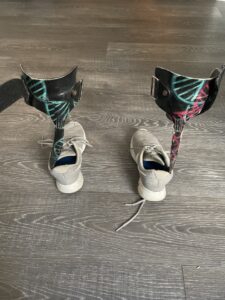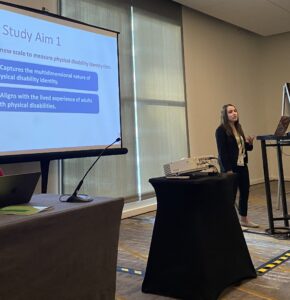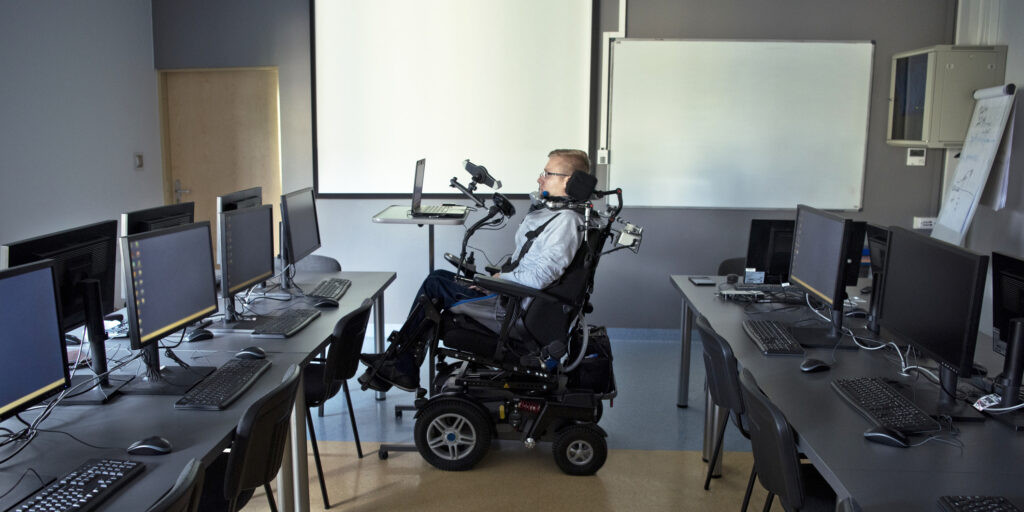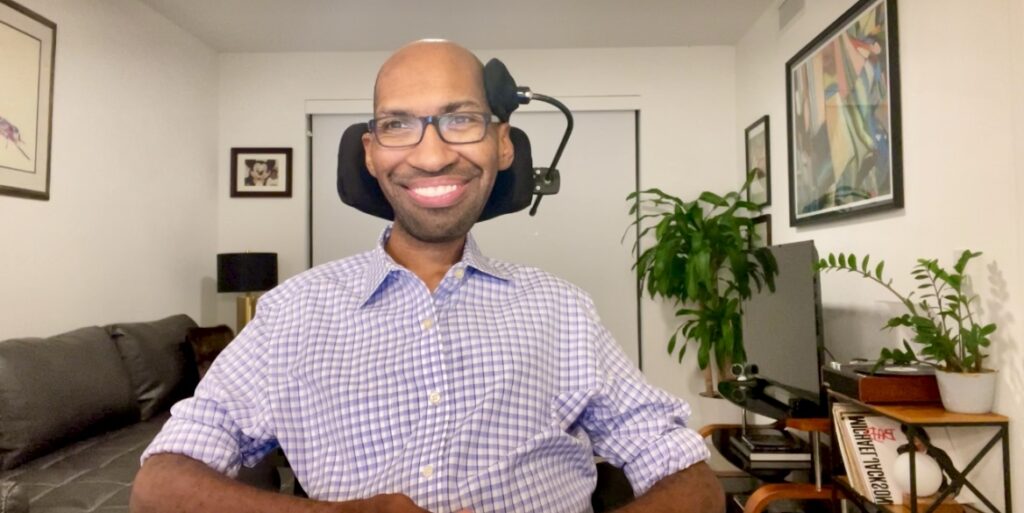
MDA Ambassador Guest Blog: What I’ve Learned as a Disability and Wellbeing Researcher
By Payton Rule | Thursday, May 1, 2025
5 Second Summary
MDA Ambassadors play an essential role in furthering MDA’s mission while representing and empowering the neuromuscular disease community. Quest Ambassador Guest Blog series provides a platform to share their personal stories, perspectives, and experience.
Payton Rule is a Clinical Psychology PhD student at Washington University in St. Louis, where her research focuses on wellbeing among individuals with disabilities. She was diagnosed with Charcot-Marie-Tooth disease (CMT) at the age of five. In her free time, Payton enjoys playing wheelchair pickleball, spending time with friends and family, and exploring local parks with her dog.

Payton Rule
A few summers ago, I was standing outside my apartment when a woman approached and asked why I was wearing leg braces. I happily shared that I have a disability called CMT and my braces help me do the things I need and want to do each day. Before I could process what was happening, she dropped to her knees and began to pray.
“Lord, please help this girl. I can tell she’s very depressed and sad. Please heal her legs so that she can be well.”
While well-intentioned, the woman’s reaction was based on an incorrect assumption: living with a disability is inherently tragic, with limited possibility for happiness. This perspective is common in society and is often reflected in media.
When I was young, perhaps influenced by these portrayals, I often wondered if it was possible to live a “good life” with a disability. Motivated by this belief, I vowed to find a cure for CMT. In middle school, I pored through medical books and journal articles, obsessing over gene therapy’s potential for treating CMT. I was convinced that individuals with disabilities could only truly thrive if their disabilities were eliminated. As a symbol of my dedication, I had a DNA double helix inscribed on my leg braces.

My old leg braces with a DNA double helix on them
As I grew older and got more involved in the disability community, I noticed that many disabled individuals seemed genuinely happy and engaged in meaningful activities. This challenged my beliefs about disability: Was disability itself the problem, or were there other factors at play? Just as I had once turned to research in search of a cure, I now turned to research to understand disability and wellbeing.
As I suspected, research found that individuals with disabilities are at a higher risk for mental health challenges. However, this work also suggests that societal barriers—such as inaccessibility, ableism, and discrimination—play a significant role in shaping disabled individuals’ wellbeing. Disability itself was not the primary or only factor impacting the wellbeing of people living with disabilities.
I found this research simultaneously disheartening and hopeful. On one hand, this research reveals the many ways society makes life unnecessarily harder for people with disabilities. On the other hand, it suggests that improving overall wellbeing for people with disabilities doesn’t require “fixing disabled bodies”. Instead, we can change the world around us to help people with disabilities thrive. For example, improving public accessibility and challenging ableist attitudes could have a meaningful impact.
Societal change, while promising, takes time. So, what can someone living with a disability do to empower themselves and increase their wellbeing while we work toward a more inclusive world? Motivated by this question, I chose to dedicate my PhD research to exploring how individuals with disabilities can cultivate wellbeing and mental health in a world that often presents barriers.
Working with Dr. Emily Willroth and Dr. Patrick Hill at Washington University in St. Louis, we have conducted multiple studies to better understand these questions. While much work remains, some findings have been particularly eye-opening.
First, we identified a variety of factors that may help support wellbeing for individuals with disabilities.

Me giving a research presentation at a conference
These included:
- Developing confidence in managing disability-related challenges.
- Fostering strong social connections.
- Engaging in meaningful activities that provide a sense of purpose.
The good news is that even if someone feels low in one or more of these areas right now, research suggests that any of these factors can be strengthened over time. For example, for me, identifying adaptive devices that enabled me to do the things I need and want to do gave me more confidence in handling disability-related challenges. Making friends within the disability community provided stronger social support. Engaging in activities aligned with my values—such as volunteering with shelter dogs—helped me develop a greater sense of purpose.
Second, our research found that viewing disability as a part of one’s social identity may be beneficial for wellbeing.
For much of my life, I resisted identifying as disabled. Throughout my childhood, my mantra was, ‘I am not disabled; I just have a physical challenge.’ However, my research suggests that embracing disability identity can be beneficial. Individuals who embrace their disability identity—by connecting with the disability community, being open about their experiences, and taking pride in their identity—report higher levels of wellbeing and mental health. This shift in perspective isn’t easy, but research suggests it can be a meaningful step toward greater wellbeing for many individuals.
What we have discovered through our research has influenced how I think about and navigate my own wellbeing as a disabled person.
One of my biggest takeaways from our research is that it is possible for individuals with disabilities to have high wellbeing and mental health.
To be clear, individuals living with disabilities experience many real challenges related to our disabilities and societal barriers. But contrary to common portrayals—and to what the woman assumed as she prayed over me— individuals with disabilities have the potential and ability to live truly great and healthy lives.
Next Steps and Useful Resources
- For more information about the signs and symptoms of Charcot-Marie-Tooth disease (CMT) , as well an overview of diagnosis and treatment concerns, an in-depth review can be found here.
- To learn more about MDA’s Mental Health Hub, visit here.
- MDA’s Resource Center provides support, guidance, and resources for patients and families. Contact the MDA Resource Center at 1-833-ASK-MDA1 or ResourceCenter@mdausa.org
- Stay up-to-date on Quest content! Subscribe to Quest Magazine and Newsletter.
TAGS: Ambassador Guest Blog, Ambassadors, Mental Health, Young Adults
TYPE: Blog Post
Disclaimer: No content on this site should ever be used as a substitute for direct medical advice from your doctor or other qualified clinician.




